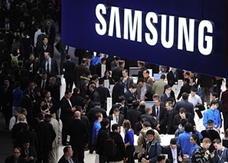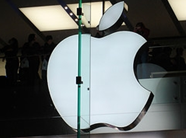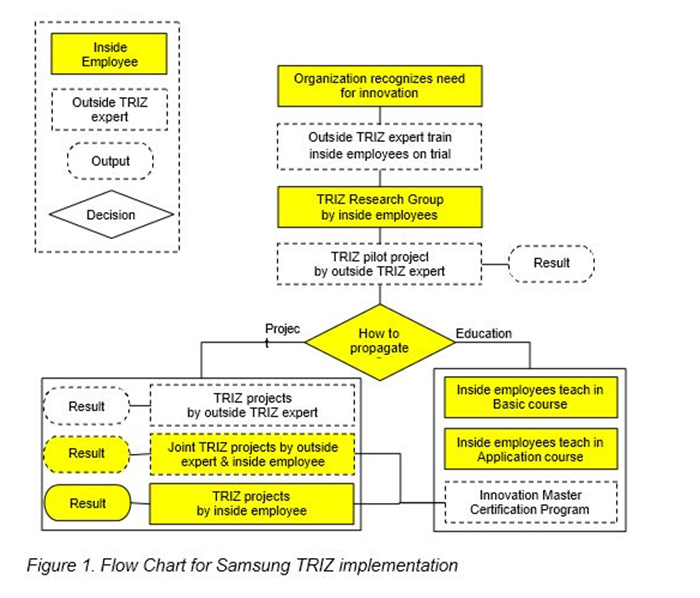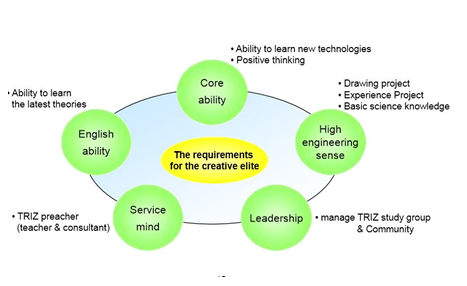Courtesy of Haydn Shaughnessy, Contributor,
“I write about enterprise innovation”
Tech 3/07/2013 @ 6:32AM |50,392 views Forbes Magazine
What Makes Samsung Such an Innovative Company?
The Samsung headquarters (Photo credit: Wikipedia)
There are critics of Samsung who argue that its success is mostly due to copying and then tweaking the innovations of others. There is a good deal of truth in this, especially around the early Galaxy designs.
But Samsung is a global leader in screen technology, TVs, batteries, and chip design. So in terms of innovation it is doing a lot right. But we know very little about how.
We know how its competitors innovate – we look at Google and see the 20% time, the big adjacencies, the search for disruption, the bold statements about the future of autos, for example.
Samsung Engineers Perfect Marketing Storm For Galaxy S4 Ahead of 14th March Solving Apple's Innovation Problem 
We know that within Apple when a project gets to a critical stage, the company assigns three teams to its development, each of which competes against the other. We know the importance of design thinking, an attribute Google is learning about. And of customer experience.
What does Samsung do in comparison? How does it line up against these American masters or conversely are Google and Apple good enou gh to compete against Samsung?
gh to compete against Samsung?
There’s no doubt that patent circumvention is an aim when Samsung innovates. From its early forays into innovation, competing against Toshiba in washing and drying machines, Samsung has chased patents in areas where its competitors appear to have protection and has oriented its innovation efforts to find new patentable ideas in its competitors’ backyard (see, for example, this Samsung presentation).
There’s nothing unusual about that. It is a sideshow. Two developments convinced the company in the late 1990s and early 2000s that they could adopt a systematic approach to innovation and that is what seems to underpin their current success.
The first development provides a broader explanation for Samsung’s innovation capacity. In the late 1990s they were able to tap into a source of cheap scientific expertise in the former Soviet Union.
Samsung has nurtured a close relationship with the Russian Academy of Science since then. There is a framework agreement between the two parties. And the Korean Government has its own agreement under which it funds Korean small businesses to develop projects on the back of Academy research. Samsung meanwhile appears to help the Academy to increase its patent count and to exploit its inventions.
There is an undated copy of the framework agreement between them online and here is an extract:
Academy warrants that Institutes of RAS have the necessary authority to transfer Inventions on separate contracts (“Concrete Agreement”) to Samsung for evaluation, and support Samsung to share part in ownership of Inventions and Patents
One early advantage for Samsung was cheap fundamental science from Russia. But even now Samsung is able to buy Russian expertise at relatively low rates of between $3,000 to $5,000 per month.
Compare that with Google and Apple – in the post-9/11 era access to the world’s best talent has become increasingly difficult because of a reluctance to grant enough visas. Samsung had that problem cracked. But then again didn’t Apple and Google – both are a magnet for talent.
Has the Russian connection shown concrete value for Samsung?
Right now Samsung is working on 3D projection and display with the Academy. In 2009 BusinessWeek reported that Samsung relied on its relationships with Russian experts for its smartphone software development, adding:
“Russian brains helped Samsung develop the image-processing chips in its digital TVs and refine its frequency-filtering technology that significantly reduced noise on its now-ubiquitous handsets.”
Page 2 of 2 ---- But a second effect of the relationship with Russian science was the introduction of TRIZ, an innovation method that Samsung adopted from 2000 onwards but which only reached American companies from the mid-2000s onwards (Intel is a user).
TRIZ is a methodology for systematic problem solving. Typical of its origins in Russia, it asks users to seek the contradictions in current technological conditions and customer needs and to imagine an ideal state that innovation should drive towards.
Samsung had early successes with TRIZ, saving over $100 million in its first few projects. It was also adopting Six Sigma at the time.
But it was TRIZ that became the bedrock of innovation at Samsung. And it was introduced at Samsung by Russian engineers whom Samsung had hired into its Seoul Labs in the early 2000s.
In 2003 TRIZ led to 50 new patents for Samsung and in 2004 one project alone, a DVD pick-up innovation, saved Samsung over $100 million. TRIZ is now an obligatory skill set if you want to advance within Samsung.
At the Samsung Advanced Institute for Technology, Hyo June Kim, who wrote The Theory of Inventive Problem Solving, a foundation text on TRIZ published in Korean, trained over 1,000 engineers across Samsung companies in 2004 alone.
What we know from this is how Samsung approaches innovation. It is not a competitive race, as it seems to be in Apple, or based on giving engineers more bench time as it is at Google.
Rather it is based on developing a creative elite. The diagram below explains that. It is taken from this presentation. The presentation also explains how Samsung used TRIZ to get to its Super AMOLED displays.
Interestingly for Samsung observers, senior management had realized that the company was a fast follower rather than an innovator, prior to the introduction of TRIZ:
Samsung Electronics has a sense of crisis that we have been a fast follower and we can not survive anymore in this position. Instead of leading the industry by developing innovative products, we have followed fast what the leading companies had developed. Top management pointed out this and asked employee not to be a fast follower, but to be an innovative leader.
TRIZ is now part of Samsung’s workflow.

At Samsung even the subsidiary CEO has to take TRIZ training. From looking at the various presentations I estimate that engineers get about 15 days of training plus 7 days specific project work. That’s quite an investment in method and people.
So the answer to why Samsung is so innovative – with at least two major product announcements this month – is that it is heavily invested in its people, it goes in search of special talent wherever it can find it, but specifically made astute moves into Russia early on; it targets its innovations towards specific competitors and patents that it wants to overhaul (as Apple did under Jobs); and it has an innovation culture based on extensive training, repeatable methodology and creative elite formation, backed by the highest levels of management.
You can argue that method and creativity don’t go together but that’s a specious argument from the start.
You can also argue that Apple and Google have better innovation processes, more free and more compelling for talented engineers. But what you can’t argue is that Samsung does not do innovation. It is proving every day that it is formidable and heavily invested in taking leadership in many areas.
The message for Apple and Google – get used to it because Samsung is not only on a roll, it has enough talented people to keep pushing.

